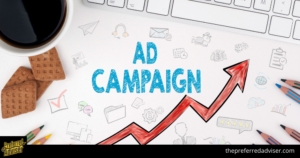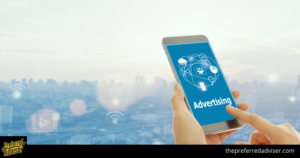Are Your Facebook Ads Not Converting?
If you want to improve your Facebook ad conversions, you’ve come to the right place. In this guide, you’ll learn the most important reasons why your Facebook ads might not be performing as well as you want them to.
We will also show you how to improve your Facebook ads so that they result in more customers. So, keep reading.
1. Ad Spending Is Too Low
 Facebook marketing is similar to marketing in other channels in many ways. To generate revenue, businesses need to spend money on advertising. To begin with advertising, you need enough money for the ads to generate into customers.
Facebook marketing is similar to marketing in other channels in many ways. To generate revenue, businesses need to spend money on advertising. To begin with advertising, you need enough money for the ads to generate into customers.
If you don’t have much money, it’s unlikely that potential customers will see your ads. An advertising campaign should be profitable if a business has enough revenue to support it.
You don’t want to invest money in something without knowing how it works, especially when it comes to acquiring new customers. If you’re new to running Facebook ads, start with a small budget and learn how to run ads profitably.
Many successful Facebook ad campaigns spend $2,000-$3,000 every month. This is a budget that most businesses can’t afford.
You should budget for ads even if you don’t want to spend a lot of money. You can add more money to your budget as you generate more revenue from your ads.
If you spend less, you’re more likely to not get the results you want.
You won’t see major results if you only give it a short amount of time. If your ad spending is below the recommended level, gradually increase your budget over time.
It’s important to keep improving what you’re selling, its price, and to get repeat customers to help cover the cost of more expensive advertising.
2. Unsure Of The Target Audience
 This part is difficult for beginners to master, but it can be solved easily by repeating the process. To make your ads successful on Facebook, you need to target them towards a specific audience.
This part is difficult for beginners to master, but it can be solved easily by repeating the process. To make your ads successful on Facebook, you need to target them towards a specific audience.
Different ads will interest different people. Some ads may be ignored by some people while others find them interesting.
People who are interested in the same thing may have different opinions about an ad. One person may not be interested in it because of the way it is presented, the lack of detail about what is being sold, or the way it is executed.
Ad targeting can be accomplished through the use of algorithms. To get a better idea of who is most likely to click on your ad, you need more than just one thing.
Having a lack of awareness for your target audience typically involves these challenges:
- Not knowing how customers in your niche interact with Facebook and other social networking websites
- Having a lack of understanding of your potential customers, where they live, and their interests that are relevant to the business
- Bad word choices in searches
- How the audience helps or makes a problem more convenient
You can improve your Facebook advertising by getting to know your customers better.
There are several ways to do this, some of which you can do yourself or with the help of other services online. Take a look at them below:
- Surveys – The information that businesses get from surveys is extremely helpful, allowing them to know what people like, potential trends that could emerge in the future, and what they’re most likely to spend their money on. Surveys can be done in ads, or relinquished to a different company and done for you.
- Communicating with customers – Most thriving businesses having success on Facebook will constantly stay in communication with the people in their niche. They may speak with them by phone, email, or on the Facebook platform itself. The information gained from communication can help you in growing your business, and getting potential customers to visit your landing page.
- Asking the right survey questions – When conducting a questionnaire or survey, be sure the questions will benefit you in some way. You should know why a customer likes what you sell, how many people they recommend you to, how they heard about your business, and the benefits that the relationship with you provides them.
3. Unclear Value Propositions
Value propositioning is integral to understanding your customers. What is Facebook retargeting and how can it help improve your Facebook ad campaigns?
The value proposition is the message businesses show their customers about how their products or services can help with a problem or task.
That’s the “value” part. The propositioning is how that messaging is carried across.
For example, food delivery services with mobile applications market themselves in clever ways. They typically show the benefits of ordering online to consumers.
The business will show how easy it is to get favorite foods delivered without having to take a ride, even from restaurants that consumers might not have considered ordering from before.
This text explains how value propositioning helps consumers by providing advantages that other products or services may not have. It also explains how convenience and ease of payment are important factors in choosing a product or service.
To create a value proposition, you should understand why your product or service is better than your competitor’s. This will help you protect your business from them.
persuasion that doesn’t ask the consumer to do anything Find out what is being provided instead of the alternative.
Use logic and facts to demonstrate to your potential customers why your services are the better option, or else highlight the challenges they may face if they go to one of your competitors.
This can be done without explicitly naming the business, but making it obvious to them what you’re referring to.
An example of this would be gig jobs such as Lyft. Using value propositioning, they improve their “value” to the customer by demonstrating that their rides are faster and cheaper than those of traditional taxis.
4. Wrong Type Of Facebook Ad
 If you create ads on Facebook without tailoring them to what you’re selling, you may get fewer clicks and conversions.
If you create ads on Facebook without tailoring them to what you’re selling, you may get fewer clicks and conversions.
If a business strays too far from its original product, its ads may not be seen by people who are interested in that product. The options that Facebook provides you with are not all that accurate, as they show you options that are apparently useful to “people who like your page” An example of this would be if you sold winter coats, and Facebook suggested that you advertise to people who live in warm climates.
An example of choosing the wrong options when running Facebook ads would be if you sold winter coats and Facebook suggested that you advertise to people who live in warm climates.
If you’re not getting conversions on your Facebook ads, it might be because you’re promoting videos instead of photos.
There are different types of ads on Facebook. If you tailor your content to what your users like to see, you can improve conversions. Don’t run ads that you don’t need. If something isn’t broken, don’t try to fix it.
Do you find that fewer people are clicking on your banners and more people are clicking on your videos? Try running more video ads.
Facebook has five different ad types. These include Carousel, where you can swipe through a collection of images, Single Video, where you can watch one video at a time, Single Image Collection, where you can view a collection of images one at a time, and Slideshow, where you can view a collection of images in a slideshow format.
There are many things that can generate traffic and conversions to your site, but you might only be familiar with a few of them. Find the type of ad that is giving you the best results and create more ads like that.
Don’t give up on the rest of your inventory just because some items aren’t selling as well as others. interest in different items may change depending on what you’re selling, the time of year, or how close it is to holidays.
5. Mundane Or Inappropriate Images
Images are two and a half times more likely to garner engagement on Facebook than ads without images, so incorporating pictures into your campaigns is key to success. Avoid using blue and white as a color scheme as it may be confused with Facebook’s branding.
Boring stock photographs won’t captivate anyone’s attention. An image that looks like a disruptive product ad is likely to turn people away.
Ad images that are effective look like they belong in a person’s Facebook News Feed, but are still designed to be eye-catching and relevant to the target audience. testing different images is important because the one that generates the most conversions is often not the one you would have anticipated
The Search Engine Land study found that the best image types for Facebook ad campaigns are photos of happy women, colorful logos, and headshots.
You may have more success getting customers to your website if you use an organic photo of them using your product, rather than a standard e-commerce photo with a white background. Try different options and see what works best. Split testing images at a lower cost can help you find the best converting image, while also minimizing your investment risk.
6. Unspecific Or Incorrect Targeting
Even if your ad is great, it won’t matter if you show it to the wrong audience.
It’s easy to assume that you can get better results by reaching a larger audience. But in reality, it’s more effective to target a specific group.
It would be beneficial for you to create a buyer profile for each campaign. Make a note of demographic information like age, income and marital status as well as psychographic information like values, interests and pain points.
It is easier to make an advertisement if you have a specific person in mind. including a buyer profile as part of your ad strategy allows you to customize your ads to seem as though you are having a one-on-one conversation with the customer – this can have a big impact on conversions.
7. A Lack Of Trust
 A study by Zendesk found that 90% of consumers said that they were influenced to make a purchase after seeing positive reviews. If you make promises that consumers think you can’t keep, they will stop doing business with you.
A study by Zendesk found that 90% of consumers said that they were influenced to make a purchase after seeing positive reviews. If you make promises that consumers think you can’t keep, they will stop doing business with you.
Trust issues occur on landing pages when a consumer clicks through.
Some things that make it difficult to trust a website include a lack of customer testimonials, unprofessional product photography, an old-fashioned site design, no terms and conditions, no refund policies, insufficient contact information, no payment symbols, and sales copy that is full of exaggeration.
8. A Lack Of Urgency
A business that sells packages for musicians increased its sales by 332% after it started using urgency in its marketing strategy.
When it comes to lower-cost items that are likely to be impulse buys, it’s important to give consumers a reason to buy right away instead of putting it off.
online consumers are rarely willing to pay full price for products, with 47% stating they rarely or never do so. Offers that are limited in time or quantity are an effective marketing tactic because they create a sense of urgency.
A timer can be a useful tool when you’re trying to manage your time while using Shopify as your e-commerce platform. If you don’t buy this product now, you may regret it later.
If you show that your product is in high demand because it is in short supply, this will communicate to potential customers that your product is of high value. People are more likely to buy products that have been endorsed by others.
9. Confusing Shipping Options
In the study by The E-Tailing Group, 73% of consumers said that getting free shipping with their order was very important to them. You could increase the price of your product and provide free shipping to see if it is worth it.
You may want to consider using free shipping as part of the incentive you offer in your Facebook ad. If the consumer is made aware of any additional shipping costs before they hit the purchase button, this will remove some of the anxiety associated with making the purchase.
10. Too Much Jargon
If you are in charge of developing or marketing a product, you may get used to using jargon to describe it. Don’t use unfamiliar terms with your audience unless they are as heavily involved in the technical aspects of your niche as you are.
This text is saying that if a potential customer is reading your advertisement and does not understand some of the language being used, the customer is unlikely to continue working with you. Use language that is easy to understand and doesn’t make your ads more confusing than necessary.
11. You Discuss Features, Not Benefits
 Most people buy things based on how they feel about it, not because it makes logical sense. When you emphasize the emotional benefits of your product in your advertising copy, rather than the logical features, people will be more likely to make a purchase.
Most people buy things based on how they feel about it, not because it makes logical sense. When you emphasize the emotional benefits of your product in your advertising copy, rather than the logical features, people will be more likely to make a purchase.
Even if you really like the details of your product, your customers are more likely to buy it because of the emotional rewards they’ll get, not because it’s useful.
A luxury watch can make someone feel like they have a higher status and more wealth. If accuracy was the primary sales driver, digital watches would outsell analog watches ten to one.
Conclusion
Do not be discouraged if your advertising campaign does not work at first – as long as you have a great value proposition that will benefit a specific audience, you just need to keep adjusting until you gain traction.

0 comments